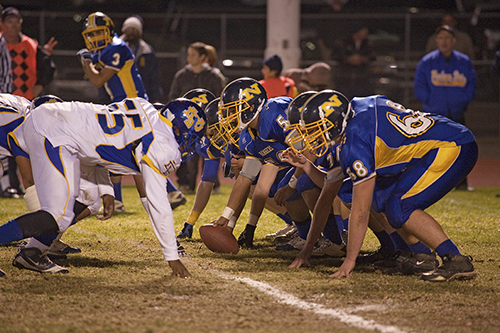Fall sports are in full swing, with a year of school and team sports participation ahead. To ensure your child is safe during physical activity, the National Athletic Trainers’ Association offers guidelines to help you ask the right questions and prepare your child for safe play.
It’s critical that the sports medicine team, coaches and parents are involved in the care of the athlete. Clear communication will help to ensure a safer sports environment. Then, athletes and those cheering for them can enjoy the competition and the benefits that come from safe participation.
“Every parent should feel empowered to ask school administrators, athletic trainers or others about sports safety practices and protocols. There is nothing more important than peace of mind and knowing my child is well cared for when participating in school sports,” said parent Amy Barrett from Bryan, Texas.
Ask your school about:
- Sports medicine teams: Ask who will provide care for your child in the event of an injury. It’s important that medical decisions are made by physicians and athletic trainers. Just over one-third of every high school in the United States has at least one full-time athletic trainer. Inter-Association Consensus shares a statement on best practices for sports medicine
management for secondary schools and colleges.
- Emergency action plans: A venue-specific written emergency action plan should be reviewed by the athletic trainer or local Emergency Medical Service.
- Equipment: All equipment including field goals, basketball flooring, gymnastics apparatus, emergency medical equipment/automated external defibrillators (AEDs) and field turf should be checked and in safe, working order.
- AEDS onsite: Medical experts and other personnel should know where AEDs are located, how to use them and be sure that they are placed on sidelines during practice and games.
- Qualified coaches: Coaches should have background and knowledge in the sport they are coaching, be credentialed if required in your area and have CPR and AED training.
- Clean gyms and locker rooms: Athletes should be discouraged from sharing towels, gear, water bottles and razors. Clothing and equipment should be laundered and/or disinfected daily. These precautions will help avoid the spread of infectious diseases such as methicillin-resistant Staphylococcus aureus (MRSA).
Preparing kids for participation:
- All athletes should have a pre-participation exam to determine their readiness to play and uncover any condition that may limit participation. The National Athletic Trainers’ Association’s position statement has information about pre-participation physical examinations and disqualifying conditions.
- Determine whether children are physically and psychologically ready for sports participation; and if they have had an injury are prepared to return to play.
- Parents should complete an emergency medical authorization form which can be obtained from the school or league.
Considerations and prevention tips:
- Prepare for warm weather activities over a 7 to 14-day period. Make sure your school’s safety protocol includes heat acclimatization to prevent heat stroke, hydration and modifying exercise based on environmental conditions. The National Athletic Trainers’ Association released a position statement on exertional heat illnesses.
- Be certain your child knows the signs of a concussion. Work with the sports medicine team on concussion management should one occur.
- Athletes should undergo cardiovascular screenings before participation in competitive activities.
- All newborns are tested at birth for the sickle cell trait, and results should be shared during a pre-participation exam. Simple precautions can prevent serious or fatal consequences.
- To avoid overuse injuries from repetitive use, encourage your child to participate in various sports throughout the year. This allows for key muscle groups to rest and recover before the next season.
- Personal equipment such as helmets and mouth guards should be checked regularly for proper fit and to ensure no damage has occurred.
Signs of potential injury:
- Listen for complaints of an overused area.
- Listen for changes in how your child feels about participating; a sudden change in attitude may signal an underlying injury.
- Check for: swelling, bruising or tenderness; lack of mobility; avoiding weight bearing during activity; limping or favoring one side of the body; pain when using a particular body part; headaches or lightheadedness; rash, irritated skin or blisters.
GET THE FACTS
- More than 7 million student athletes participate in school sports each year, according to the National Federation of State High School Associations.
- Medical costs for sports injury emergency department visits exceed $935 million each year, research shows.
- National Sporting Goods Association shares that in total, approximately 46.5 million children play team sports each year in the U.S.
- 1.6 to 3.8 million concussions occur each year during sports and recreation and more than half can be attributed to football.
- Sudden cardiac arrest is the leading cause of death in exercising young athletes.
- Over half of catastrophic injuries in sports are cervical spine injuries.
Scott Sailor, EdD, ATC, is the president of the National Athletic Trainers’ Association.





